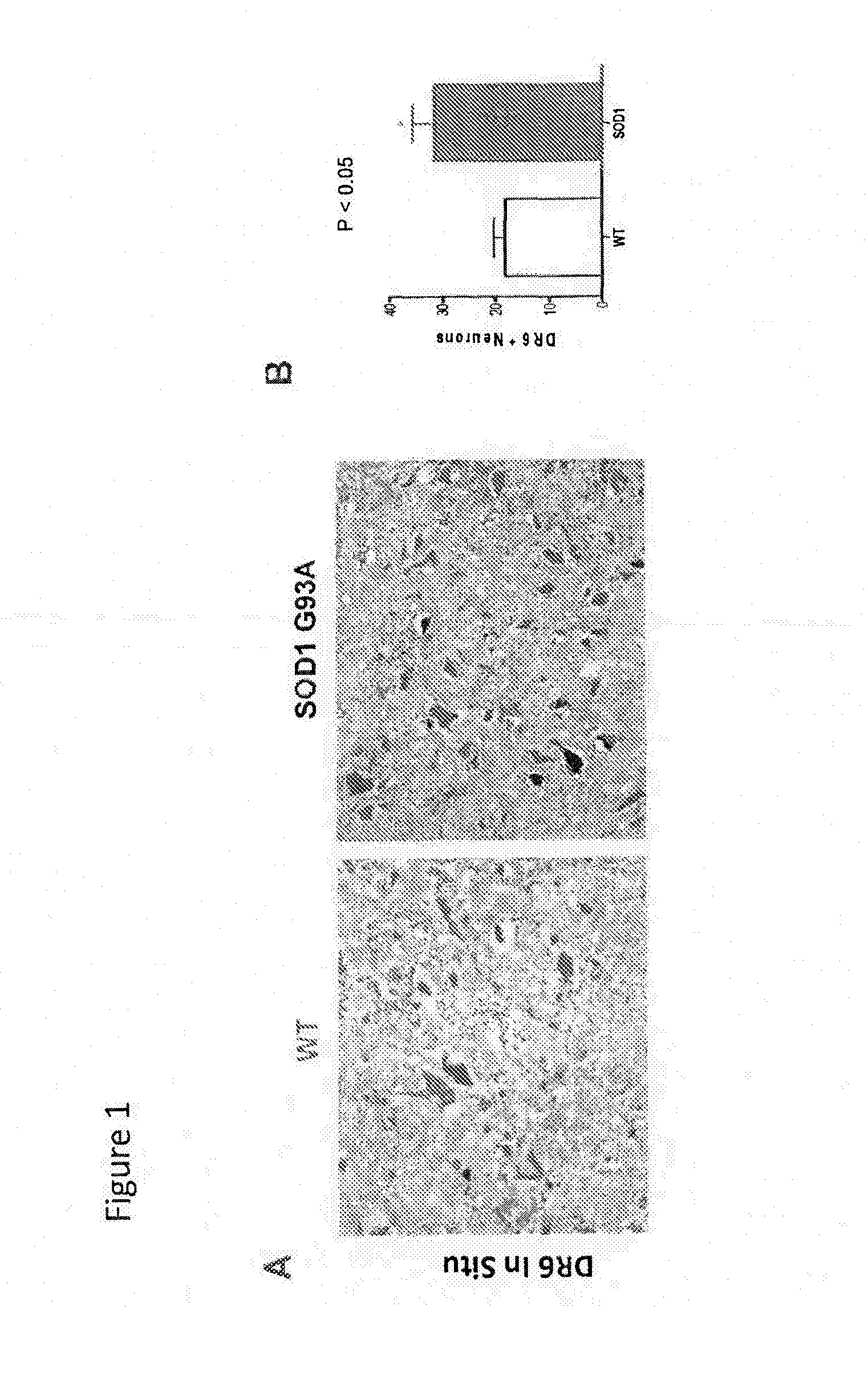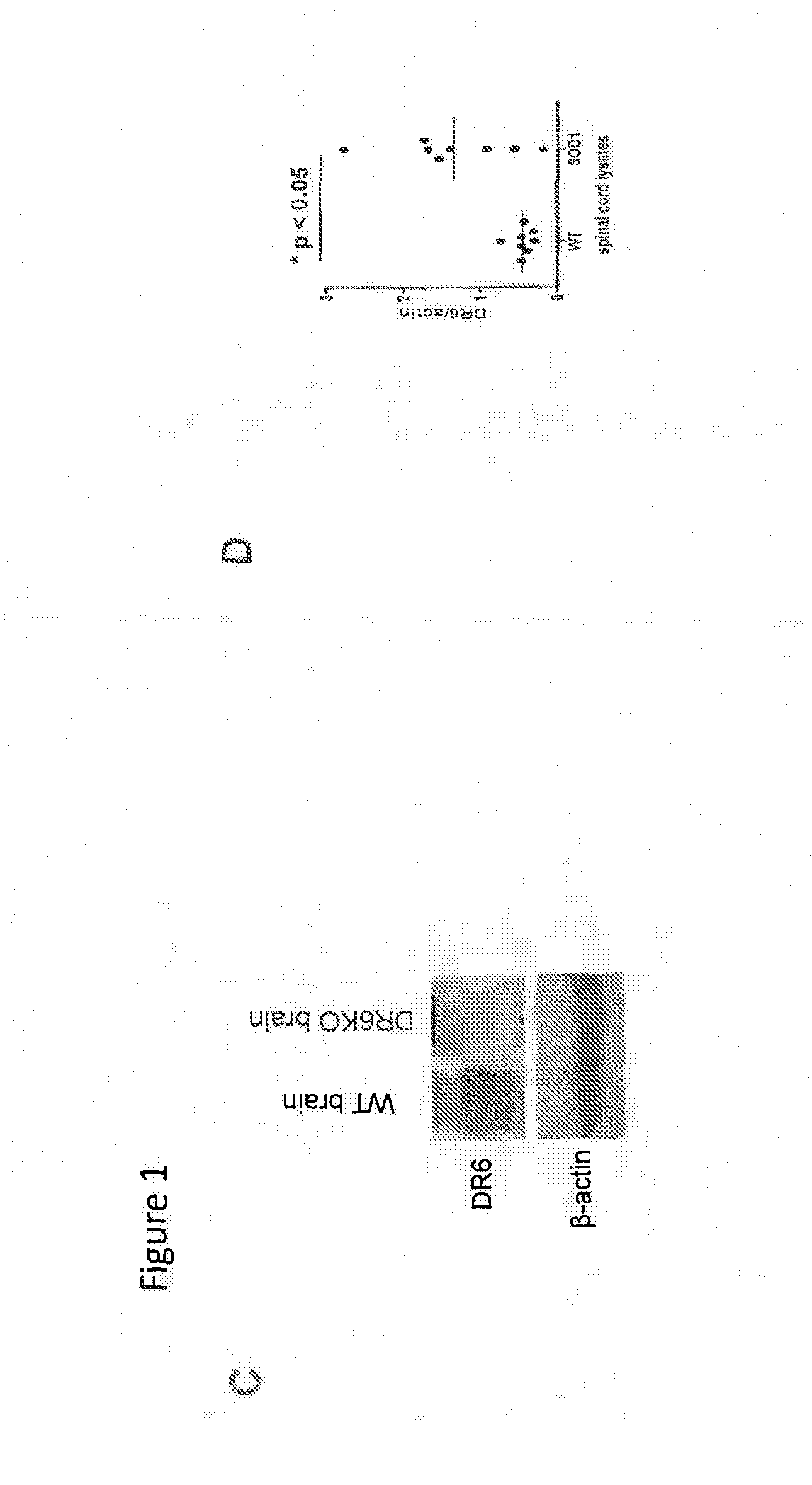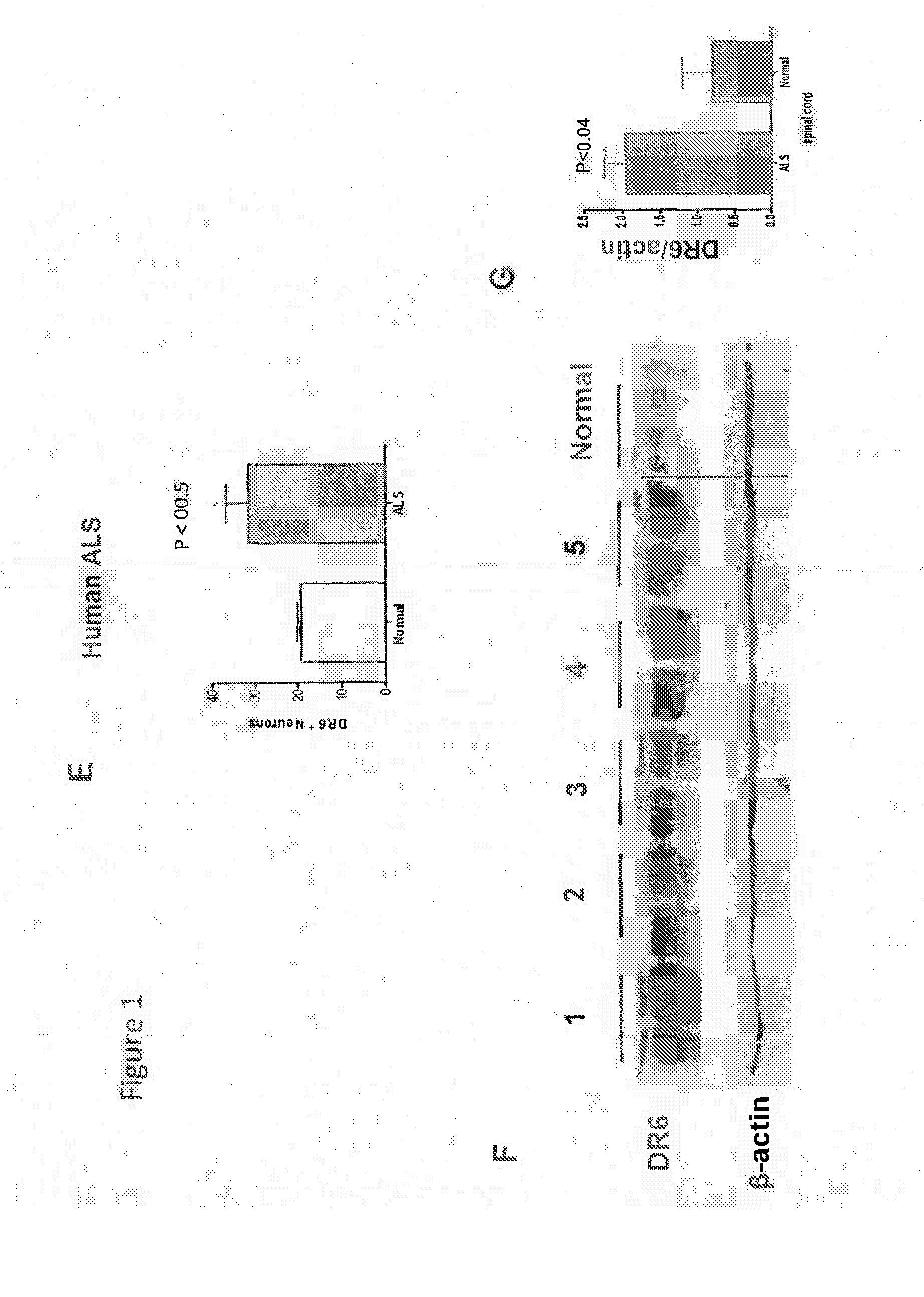Use of DR6 Antagonists to Improve Motor Neuron Disease
- Summary
- Abstract
- Description
- Claims
- Application Information
AI Technical Summary
Benefits of technology
Problems solved by technology
Method used
Image
Examples
example 1
DR6 is Upregulated in ALS Postmortem Samples and SOD1G93A Mice Spinal Cords
[0258]DR6 is broadly expressed by developing neurons, including motor neurons. Since ALS is a motor neuron disease, investigations were preformed to determine if DR6 was involved in ALS pathology. First, DR6 levels were determined in SOD1G93A transgenic mice, the most characterized animal model for ALS. Using in situ hybridization to quantify DR6 mRNA levels in the ventral horn region of the lumbar spinal cord of SOD1G93A mice, DR6 antisense RNA strongly stained motor neurons, as evident from their characteristic morphology (FIG. 1A). There were 1.7 fold more DR6 positive neurons in SOD1G93A than in aged-matched non-transgenic animals (FIG. 1B n=3 / group). DR6 positive SOD1G93A neurons were smaller and stained more intensively than control (FIG. 1A), suggesting that DR6 expression is upregulated in pathological motor neurons.
[0259]To determine if DR6 protein levels are also increased in spinal cord of SOD1G93A...
example 2
Blocking DR6 Promotes Motor Neuron Survival In Vitro
[0261]DR6 was previously reported to induce developmental neuronal cell death. Based on this information in combination with the data that DR6 is upregulated in SOD1G93A mice and human ALS postmortem samples, it was hypothesized that DR6 may play a role in motor neuron death, and blocking DR6 could promote motor neuron survival in cell culture. To test this hypothesis, DR6 expression was determined in cultured human motor neurons. Immunocytochemistry analysis (ICC) of human motor neurons revealed anti-DR6 antibody 6A12, but not control antibody, co-stained motor neuron with anti-neurofilament (NF) antibody (FIG. 2A). Staining occurred in both the cell body and axons.
[0262]It was next determined if blocking DR6 protected motor neuron from death using three methods: growth factor removal, sodium arsenite (induced mitochondrion oxidative stress), and astrocyte (SOD1G93A) induced cytotoxicity in motor neuron / astrocyte co-culture. Growt...
example 3
Blocking DR6 Promotes Survival and Functional Recovery in SOD1G93A Mice
[0264]The effects of blocking DR6 on survival and functional recovery in the SOD1G93A mice was determined using DR6 antagonist monoclonal antibody 5D10, the same antibody used previously in multiple sclerosis animal models. Mice were treated with 6 mg / kg 5D10 or control antibody MOPC21 intraperitoneally twice per week, beginning on day 42. Body weight, onset of clinical symptom, survival duration, and functional improvement by Rota-rod were monitored.
[0265]Disease onset was defined as slightly impaired initiation of movement based on Jackson Lab's criteria. Endpoint was defined as animal unable to right itself within 30 s when placed on either or both side(s). 5D10 treatment significantly delayed disease onset by 4 days, with median times to onset of 123 and 119 days in treatment and control groups, respectively (FIG. 3A; Log-rank (Mantel-Cox) test. p=0.016). 5D10 treatment also significantly increased survival b...
PUM
| Property | Measurement | Unit |
|---|---|---|
| Light | aaaaa | aaaaa |
| Affinity | aaaaa | aaaaa |
Abstract
Description
Claims
Application Information
 Login to View More
Login to View More - R&D
- Intellectual Property
- Life Sciences
- Materials
- Tech Scout
- Unparalleled Data Quality
- Higher Quality Content
- 60% Fewer Hallucinations
Browse by: Latest US Patents, China's latest patents, Technical Efficacy Thesaurus, Application Domain, Technology Topic, Popular Technical Reports.
© 2025 PatSnap. All rights reserved.Legal|Privacy policy|Modern Slavery Act Transparency Statement|Sitemap|About US| Contact US: help@patsnap.com



